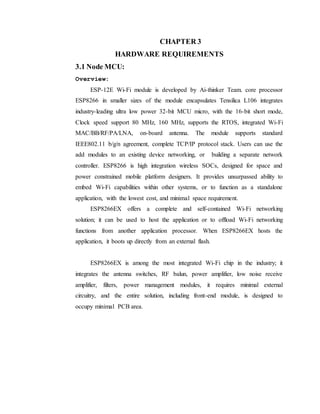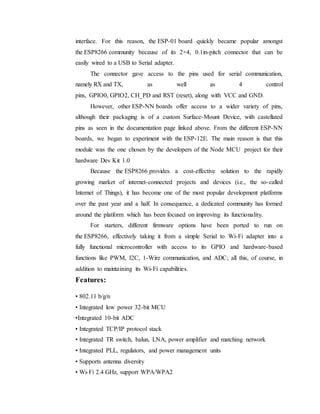The document discusses hardware requirements for a project, focusing on the Node MCU and related components. It provides an overview of the ESP-12E Wi-Fi module and Node MCU board, describing their features, pinouts, and applications. It also discusses the power supply requirements, including a step-down transformer, rectifier, filter capacitor, and 7805 voltage regulator. Finally, it briefly introduces the DHT-11 temperature and humidity sensor.



































